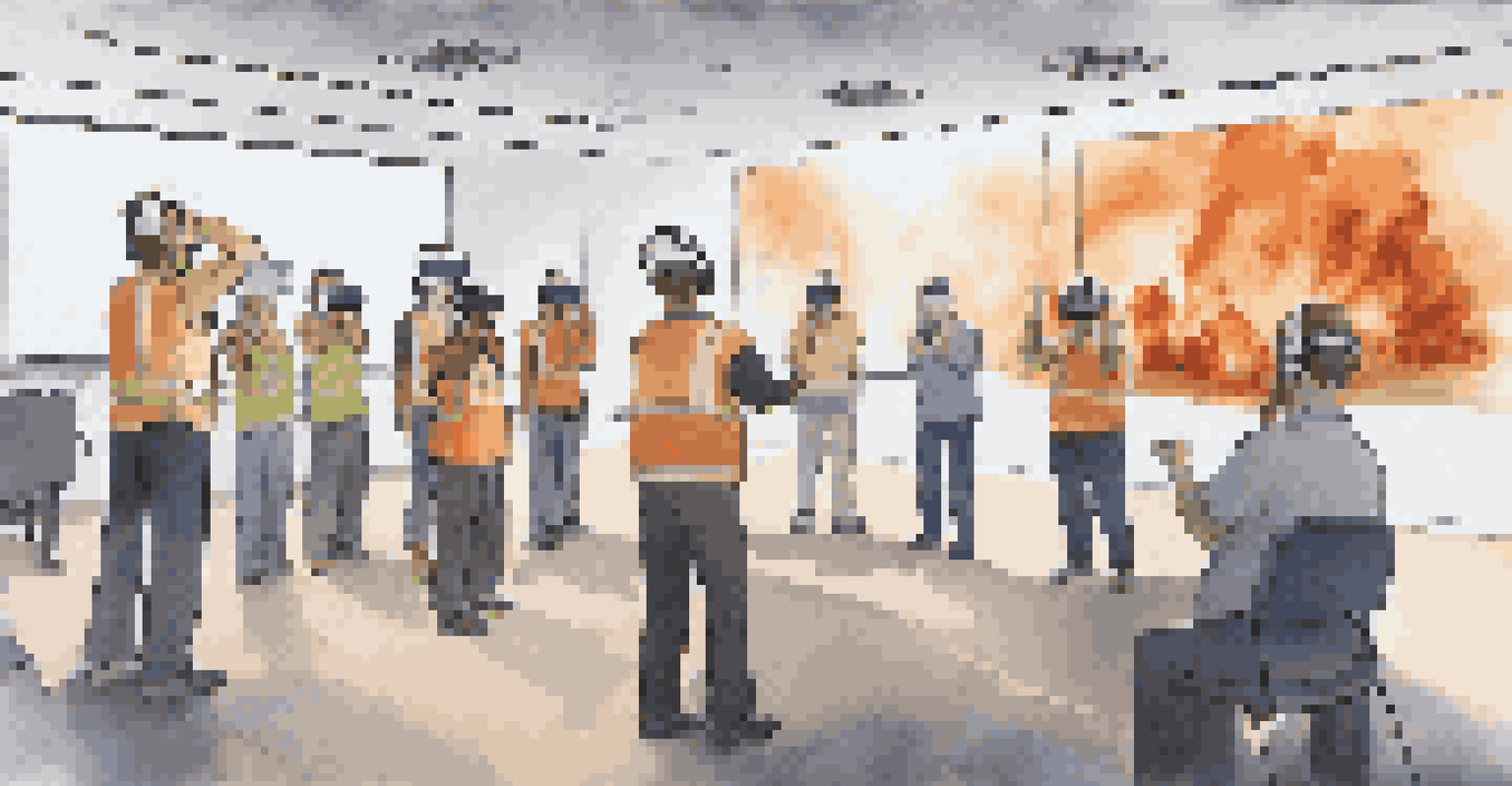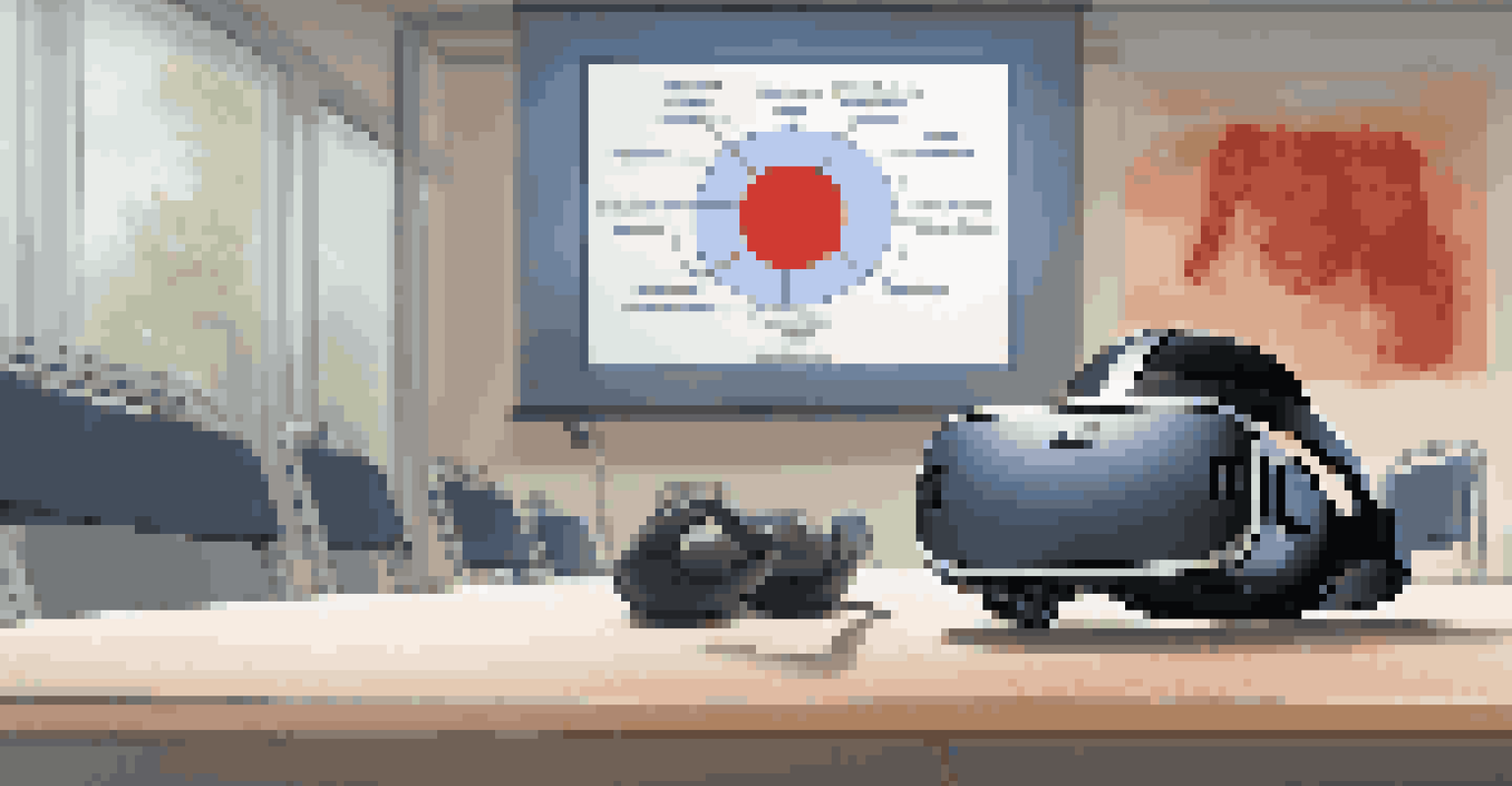Virtual Reality for Disaster Preparedness Training Programs

Understanding Virtual Reality in Disaster Training
Virtual reality (VR) is an immersive technology that allows users to experience simulated environments. In the context of disaster preparedness, VR provides a safe space for training without the risks associated with real-life scenarios. By recreating realistic disaster situations, participants can learn to respond appropriately and effectively.
Virtual reality is not just a tool for entertainment; it’s a powerful platform for training and education, especially in high-stakes environments like disaster response.
The ability to interact with a virtual environment enables trainees to practice their skills repeatedly, which is crucial for retention. Scenarios can range from natural disasters like earthquakes and floods to man-made crises such as fires or hazardous material spills. This hands-on experience helps build confidence and competence in emergency situations.
Moreover, VR training can be customized to reflect local risks and challenges, making the experience more relevant and impactful. This tailored approach ensures that trainees are better prepared for the specific types of emergencies they may face in their communities.
Benefits of VR Training for Emergency Responders
One of the key benefits of using VR in disaster training is the enhanced realism it offers. Trainees can practice their decision-making skills in high-pressure situations, which is often difficult to replicate in traditional training methods. This immersive experience helps them develop critical thinking and problem-solving skills under stress.

Additionally, VR training can be conducted remotely, making it accessible to a wider audience. First responders, community volunteers, and even civilians can participate in training sessions without needing to be physically present at a training facility. This flexibility allows for more comprehensive preparedness efforts across diverse populations.
VR Enhances Disaster Training
Virtual reality provides immersive training experiences that help emergency responders practice their skills in realistic disaster scenarios.
Lastly, the feedback mechanisms built into VR systems provide immediate insights into a trainee's performance. After each simulation, participants can review their actions and decisions, gaining valuable lessons that can be applied in real-life scenarios.
Cost-Effectiveness of VR Training Solutions
While the initial investment in VR technology might seem high, the long-term cost savings are significant. Traditional disaster training often involves logistics like equipment, facilities, and personnel costs, which can add up quickly. VR eliminates many of these expenses by providing a consistent training environment that can be used repeatedly.
The future of training lies in immersive technologies that allow us to practice our skills in a safe and controlled environment, preparing us for the unexpected.
Moreover, VR training reduces the need for physical resources, such as props or safety equipment, which can be costly and time-consuming to maintain. With virtual simulations, there are no equipment costs or safety concerns, making it a more economical choice for organizations looking to enhance their training programs.
In the end, the benefits of improved preparedness and reduced risks during actual disasters far outweigh the initial costs. Investing in VR training can lead to better outcomes in emergency situations, ultimately saving lives and resources.
Engagement and Retention Through Immersive Learning
One of the most compelling aspects of VR training is its ability to engage participants actively. Unlike traditional lectures or videos, VR immerses users in an interactive environment that keeps them focused and involved. This level of engagement significantly enhances learning retention.
Studies have shown that immersive experiences lead to better memory recall and understanding. When learners are emotionally and physically involved, they are more likely to remember the training content when faced with a real-life emergency. This is especially important in disaster preparedness, where quick thinking and action can mean the difference between safety and danger.
Cost-Effective Training Solution
Despite initial setup costs, VR training offers significant long-term savings by reducing logistics and physical resource expenses.
Furthermore, the gamification of VR training—where participants can earn points or rewards for their actions—adds an element of fun. This motivates individuals to take the training seriously while also encouraging repetition, which is essential for mastering emergency response skills.
Challenges in Implementing VR Training Programs
Despite the numerous advantages, implementing VR training programs does come with its challenges. One significant barrier is the initial setup cost, which includes purchasing VR headsets, software, and the necessary hardware. Organizations must weigh these costs against the potential benefits before diving in.
Additionally, there may be a learning curve for both trainers and participants. Familiarizing everyone with the technology can take time and patience, which may slow down the initial rollout of the training program. Proper training and support are essential to ensure that users are comfortable and confident in using the VR systems.
Lastly, not all disaster scenarios can be effectively replicated in a virtual environment. While VR excels in many areas, some complex situations may require hands-on training or real-world experience to fully prepare responders. Organizations need to find a balance between VR training and traditional methods to ensure comprehensive preparedness.
Real-World Examples of VR in Disaster Training
Several organizations have successfully integrated VR into their disaster preparedness training programs, showcasing its effectiveness. For instance, the U.S. Department of Homeland Security has utilized VR to simulate various disaster scenarios, allowing first responders to practice their skills in a controlled environment. Participants reported increased confidence in their abilities after completing these simulations.
Another example is the use of VR by the American Red Cross, which has developed training modules for volunteers to prepare for emergencies. By immersing volunteers in realistic disaster situations, they can better understand their roles and responsibilities, ensuring they are ready when disaster strikes.
Engagement Boosts Learning Retention
The interactive nature of VR training actively engages participants, leading to improved retention of critical emergency response skills.
These real-world applications demonstrate that VR is not just a theoretical concept but a practical tool that enhances disaster preparedness training. As more organizations adopt this technology, the potential for improved emergency response increases dramatically.
The Future of VR in Disaster Preparedness Training
As technology continues to evolve, the future of VR in disaster preparedness training looks promising. Advancements in VR hardware and software will likely lead to even more realistic and engaging training experiences. This ongoing innovation will allow trainers to simulate a wider variety of scenarios, making preparedness training even more robust.
Moreover, as VR becomes more mainstream, we can expect to see a decrease in costs, making it accessible to a broader range of organizations. Smaller communities, which may have limited budgets for training, could greatly benefit from the affordability and effectiveness of VR solutions.

Ultimately, the integration of VR into disaster preparedness training represents a significant step forward in how we equip individuals and organizations to handle emergencies. As we embrace this technology, the potential for saving lives and improving community resilience continues to grow.